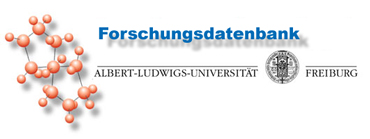| [Zurück zum Forschungsbericht] |
 |

Floodflux: Greenhouse Gas Emission from Floodplain Forest - An Underestimated Natural Source
Projektbeschreibung:Department of Forest Ecology and Soils Mitarbeiter suchen Suche Site and Vegetation Soil Ecology Agricultural Soil Mapping and Geoinformation Climate Impact Research Coordination FloodFlux – detecting greenhouse gas emissions in floodplain forests Floodplains are periodically flooded, which makes scientific working difficult. Hence, these highly dynamic ecosystems have not yet been investigated extensively with regard to greenhouse gas (GHG) fluxes. The Austrian Research Centre for Forests launches a project to measure the GHG fluxes in the Austrian Danube National Park. Floodplain forests are very dynamic ecosystems and are among the most productive and diverse ones on earth. The majority of the vegetation consists of forest stands of various ages and a diverse tree species composition. These forests are known to be very productive and to provide a wide range of ecosystem services, such as high biodiversity, timber production, flood and nutrient retention, carbon sequestration, as well recreation and aesthetic value. The National Park “Donau-Auen“ is the biggest semi-natural floodplain forest in Central Europe. The periodic input of nutrients and the continuous supply with water safeguards the diversity and productivity of the forests. These conditions are at the same time perfect requirements for the production of greenhouse gases harmful to the climate, such as nitrous oxide (N2O) and methane (CH4). Department of Forest Ecology and Soils Mitarbeiter suchen Suche Site and Vegetation Soil Ecology Agricultural Soil Mapping and Geoinformation Climate Impact Research Coordination FloodFlux – detecting greenhouse gas emissions in floodplain forests Floodplains are periodically flooded, which makes scientific working difficult. Hence, these highly dynamic ecosystems have not yet been investigated extensively with regard to greenhouse gas (GHG) fluxes. The Austrian Research Centre for Forests launches a project to measure the GHG fluxes in the Austrian Danube National Park. Floodplain forests are very dynamic ecosystems and are among the most productive and diverse ones on earth. The majority of the vegetation consists of forest stands of various ages and a diverse tree species composition. These forests are known to be very productive and to provide a wide range of ecosystem services, such as high biodiversity, timber production, flood and nutrient retention, carbon sequestration, as well recreation and aesthetic value. The National Park “Donau-Auen“ is the biggest semi-natural floodplain forest in Central Europe. The periodic input of nutrients and the continuous supply with water safeguards the diversity and productivity of the forests. These conditions are at the same time perfect requirements for the production of greenhouse gases harmful to the climate, such as nitrous oxide (N2O) and methane (CH4). The forests at the Danube are the biggest semi-natural floodplain forest in Central Europe (picture: pixabay). Measurements of greenhouse gas emissions Andreas Schindlbacher, Barbara Kitzler and their colleagues from the Department of Forest Ecology and Soils at BFW investigate within the ACRP-Project “FloodFlux” how nitrous oxide and methane fluxes from and to temperate floodplain forests. The researchers trace the GHGs and environmental conditions at several representative locations, to understand the underlying processes of GHG formation and uptake. The objective of the project is to determine the impacts of periodic flooding on GHG emissions throughout the national park forests. The project will therefore deliver important ideas for improvement of greenhouse gas inventories in (floodplain) forests. The results will furthermore give important insights to improve current strategies on climate change adaptation. Partners of the project are the University of Natural Resources and Life Sciences Vienna (BOKU),the Karlsruhe Institute of Technology (KIT), and the University of Freiburg. Various forest sites with diverse conditions The Austrian Danube National Park ranges from the east boundaries of the city downstream to the border of Slovakia (ca 40 km length, 10.000 ha area). The Danube system here results from the seasonal floodwaters coming from the alpine catchment. The ecological degradation of the river led to constrained side arm connectivity and the loss of riverine habitats. Today’s major restoration efforts aim at improving the ecological status, as well as the hydrological connectivity between the river and its floodplain.Projektlaufzeit:
Weitere Informationen: http://https://bfw.ac.at/db/bfwcms.web?dok=1010285
Ansprechpartner: Lang F
Projektbeginn: 2017Projektleitung:
Projektende: 2020
Schindlbacher A, Lang F, Graf-Rosenfellner MKooperationspartner
Stellvertretung: Graf-Rosenfellner M
Bundesforschungs- und Ausbildungszentrum für Wald, Naturgefahren und Landschaft
Austria, 1131 Wien, Seckendorff-Gudent-Weg 8
Professur für Bodenökologie
Prof. Dr. Lang
Bertoldstr. 17
79098 Freiburg i. Br.
Telefon: +49 761 203 3625
Fax: +49 761 203 3618
Email: fritzi.lang@bodenkunde.uni-freiburg.de
http://www.bodenkunde.uni-freiburg.de
BfW Wien, Boku Wien, KIT KarlsruheAktueller Forschungsbericht